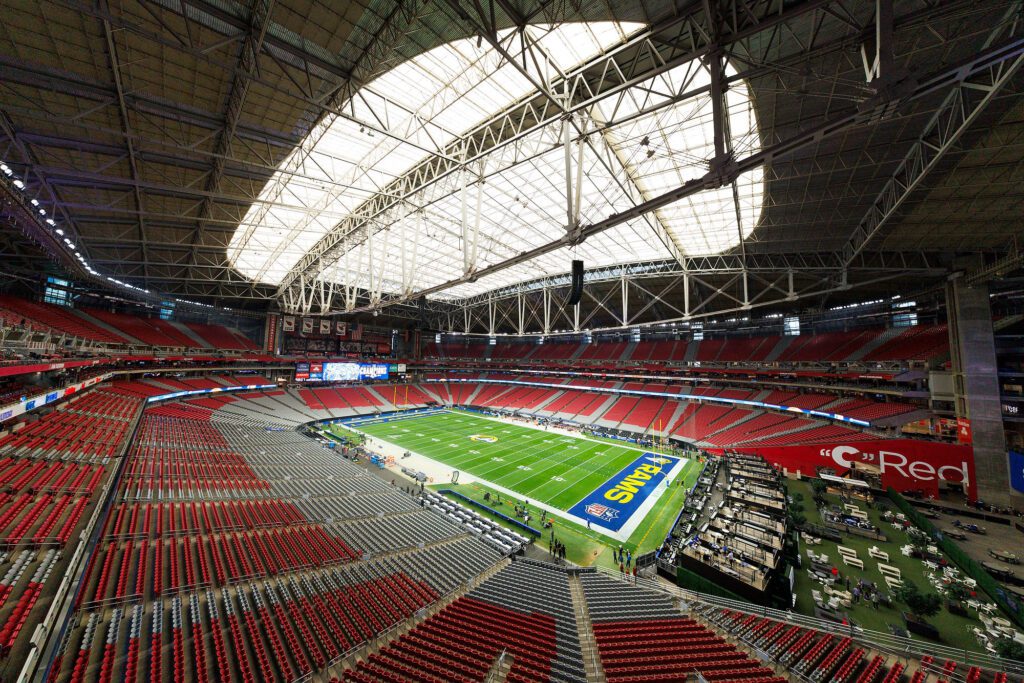Arizona has neither the biggest area nor the highest number of people compared to other US states. However, as the 6th largest and 14th most populous US federal unit, the Grand Canyon State has produced some amazing sports figures. From dizzying sports match attendance to some major events of national significance to local efforts, Arizona is showing how to blend sports and economy in the 21st century in a lucrative and entertaining manner, but let the figures speak for themselves in the role of sports in Arizona’s economic development.
Sports Games Attracting Huge Audiences
The biggest sporting venue in Arizona is the State Farm Stadium in Glendale, where the Arizona Cardinals play their NFL matches. With a capacity of 63,400 visitors, its annual attendance is just a little bit over half a million people.
The Arizona Diamondbacks play their MLB matches in Chase Field – a 48,500-seat venue in Phoenix. The stadium’s average attendance per game is 28,500, amounting to a significant number of spectators on an annual basis.
The Phoenix Suns play their matches in the PHX Arena, which can accommodate around 17,000 people, resulting in an annual attendance of 614,000 visitors.
You don’t have to be great at maths to calculate that these three sports clubs attract more than a million spectators per year. We know that paying a visit to a stadium includes more expenses than just buying a ticket – getting something to eat or drink and placing a bet are all common routines when watching sporting events. As for the latter, having Arizona sports betting explained before visiting the State Farm, PHX Arena, or Chase Field is valuable if you want to play the right games with updated odds. For instance, knowing that the Suns have only 5% of qualifying for the forthcoming NBA playoffs is a useful piece of information.
Nevertheless, all the clubs above generate a significant income even without winning any major league for some time now. As a matter of fact, the Cardinals are the oldest NFL franchise that doesn’t have a Super Bowl title.
Major Events Driving People and Revenue
Apart from being home to several professional league franchises, Arizona often hosts major periodic sports events that bring a substantial amount of revenue to the state.
The most impactful such event in 2024 was the NCAA Final Four, held in the State Farm Stadium. Around $300 million was generated during those few days from both the local people and visitors from other states who came to root for their favorite NCAA clubs. If there wasn’t such a modern stadium in Arizona, it’s less likely that this event would take place there in the first place. Thanks to the existence of this venue, the other sectors profited from the NCAA Final Four 2024, such as the hospitality and transport fields.
As for 2025, Arizona was already host to two major sporting events: WM Phoenix Open and SheBelievesCup. The former is a widely appraised tournament of the PGA Tour. This prestigious golf competition took place at TPC Scottsdale from 3 to 9 February. The winner was Belgian Thomas Detry, and the players shared the purse of $9.2 million. With hundreds of thousands of visitors from different parts of Arizona, the US, and the world, this was a success for both the PGA Tour and local organizers.
SheBelievesCup – the regular annual women’s football tournament – was held from February 20-26. The State Farm Stadium hosted two matches on February 23: Colombia-Japan and USA-Australia. More than 23,000 spectators watched the US women’s national soccer team defeat Australia; however, the USWNT lost to Japan in the final match.
One of the most anticipated sports events in Arizona this year – to be honest, every autumn – is the NASCAR Cup Series Championship at the Phoenix Raceway. Scheduled for November 2, 2025, this NASCAR race is one of the most exciting and attended races in the annual calendar. It’s the pinnacle of the sports year in Phoenix and Arizona, so tickets are already being sold, so it’s important to buy months before the event.
The Power of University Athletics
Phoenix is without a doubt the focal point of commercial sports events in Arizona (Glendale is considered one of its suburbs). However, Tucson – the second largest city in Arizona – also has some aces up its sleeve. The most powerful one is the University of Arizona with its Arizona Athletics events. A recent study has shown that the citizens of Arizona and out-of-state visitors who come to Tucson only to watch athletic events together spend about $130 million a year. More than 2,000 jobs depend on these spectators and their expenditures, with a total income of $77 million.
According to the same report, the sports events organized by the University of Arizona attracted almost 1 million visitors in 2023, with more than 100,000 visitors from states other than Arizona paying a visit to basketball, baseball, football, track and field, and other athletic events.
If we know that the sports and tourism sectors combined generated around $20 billion for Arizona’s GDP in 2024, it’s clear that both commercial and university sports play a vital role in the economy of Arizona.
Sport has been a major driver of economic growth for decades in many parts of the US. Arizona is one of the best examples of a state in which professional sports matches and university athletic events go hand in hand with other relevant industries. Working in a joint mission of popularizing sports and improving local economies, they’ll keep growing in the time ahead.



